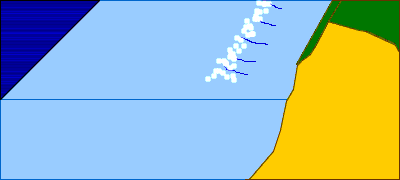

As the surface water is pushed away from the coast, cold nutrient rich water rushes up to fill the gap left by the absence of the warmer surface water. This is called upwelling, and it also occurs in some coastal regions in California, and West Africa as well as off the Peru Coast. The water is nutrient rich due to the amount of creatures (living and dead) settling down into the depths of the water. The nutrient rich water contains billions of plankton (small drifting organisms that can either plant or animal) in the water are the basis of a fairly complex food chain that sustain fish and bird populations, and the businesses human beings build upon them, like anchovy fisheries and fertilizer (from the bird guano) factories.
 |